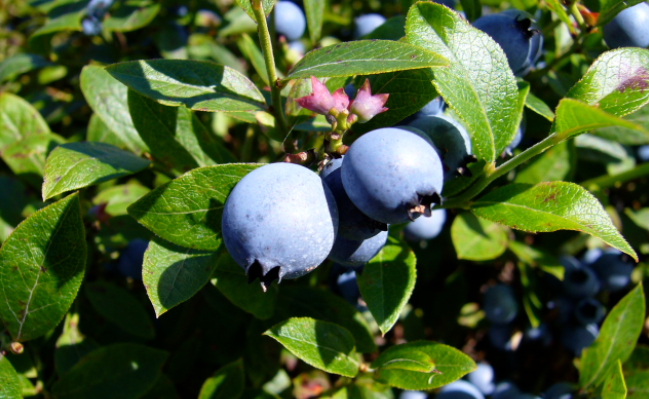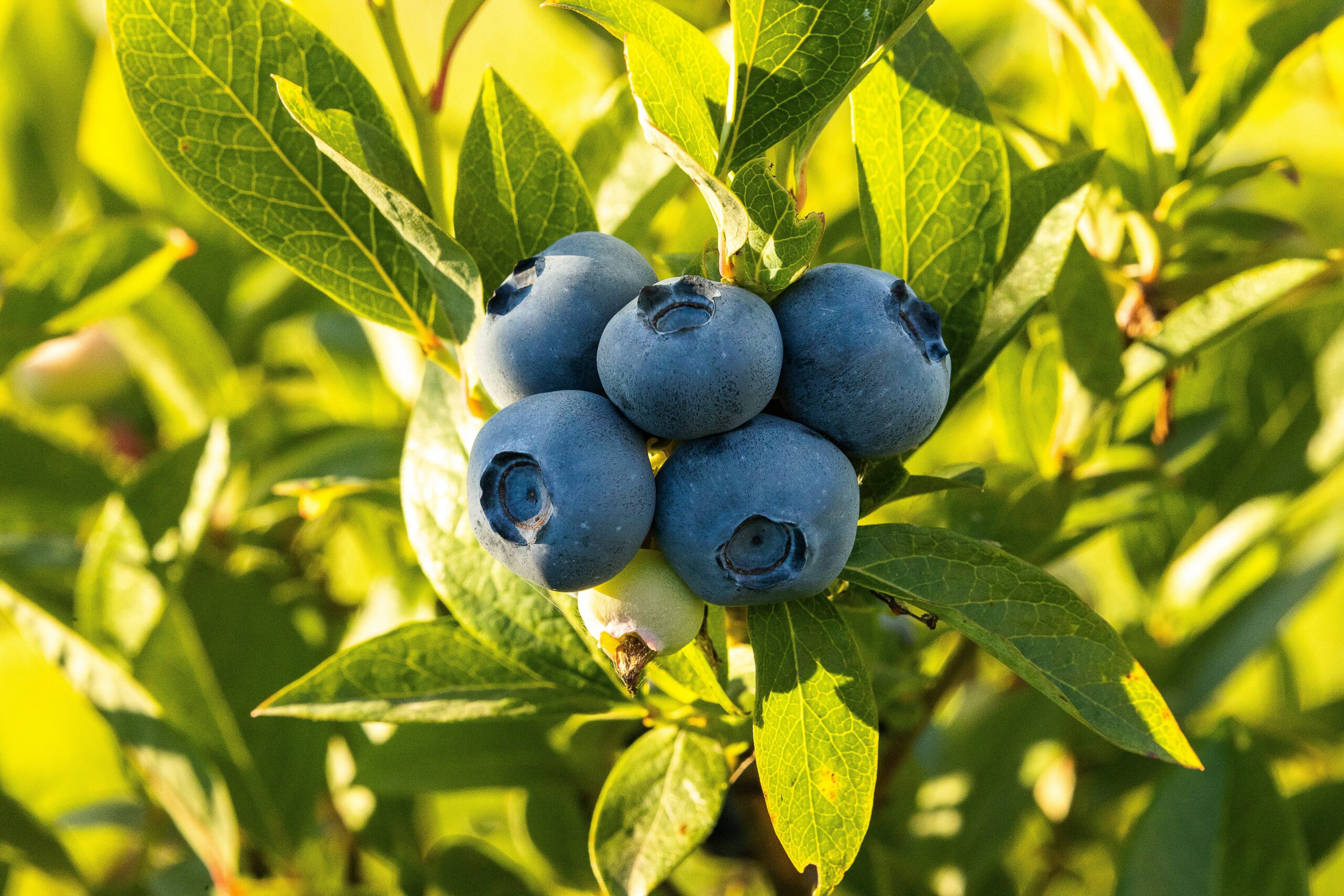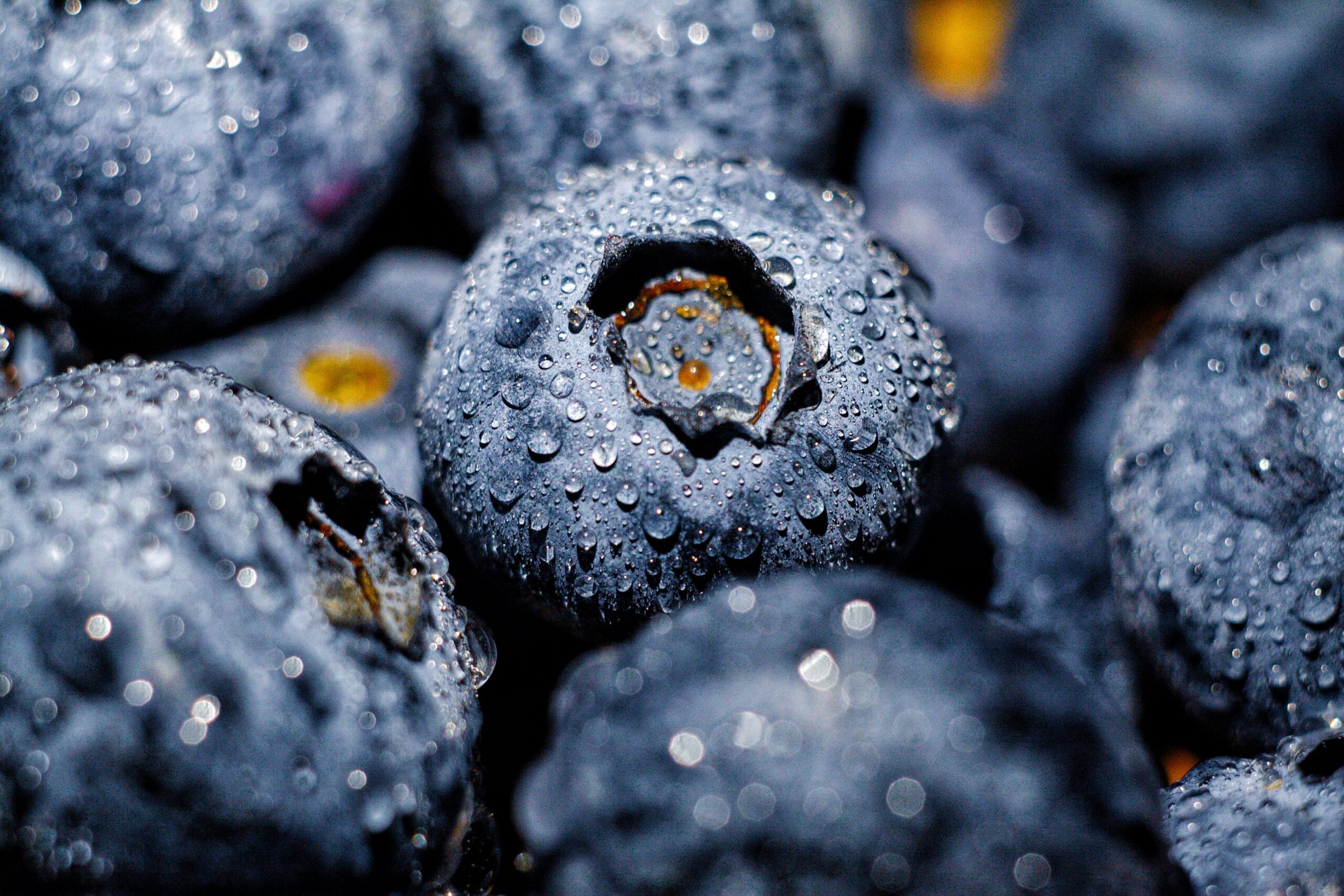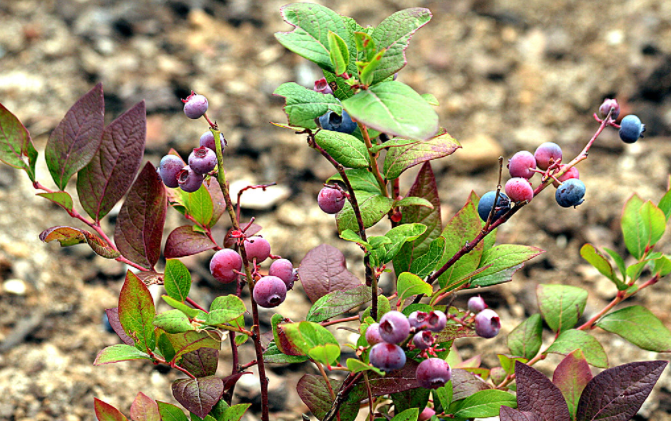- Best Blueberry Companion Plants That You Should Totally Plant Together - August 13, 2021
- Chandler Strawberry Growing Guide: How to DIY? - August 8, 2021
- Albion Strawberry Growing Guide: How to Enjoy This Fruit All Summer - July 5, 2021
Blueberries, Vaccinium sect. Cyanococcus, are a staple fruit for many North Americans and Europeans. Native to the North-Central and Eastern regions of North America – they often find a welcoming place in jams, desserts, or fresh.
Among the many blueberry varieties, Bluecrop stands out for its heavy production, hardiness, vigor, beauty.
Why Grow Bluecrop Blueberries?

Bluecrop blueberries have some unique features that may make them suitable for your garden. They are self-pollinating, disease-resistant, and display gorgeous clusters of white flowers and berries every year. Compared to other varieties, Bluecrop is a very heavy producer. About three or four years after planting, you can expect to get 10 to 20 lbs of fruit each summer.
Also, Bluecrop is a hardy variety, tolerating winters as cold as USDA zone 4. This zone includes parts of the upper midwest, Northern Plains, and the upper northeastern United States. Gardeners in these regions have to be careful as growing seasons are short, and winters are frigid.
Aesthetically, Bluecrop blueberries offer a touch of beauty in the garden from spring through fall. In the spring, attention-grabbing bunches of white flowers adorn its branches. During the summer, the bush has delicate light blueberries at various stages of growth, from pale blue-green to bright-blue.
The leaves turn a bright crimson red during the fall months as a final act of flamboyance. These characteristics allow the Bluecrop to be a valuable garden fruit and an attractive informal hedge.
How Does a Bluecrop Blueberry Taste?
Bluecrop blueberries have a sweet yet tart flavor. Compared to other varieties, they are very firm. Most consumers use them in jams, jellies, and desserts. Also, the firm texture allows them to freeze well. Some people enjoy eating them fresh. What you do with these blueberries is all a matter of personal taste. Overall, it is an all-purpose blueberry.
Blueberries are not only a treat for humans; animals love them too. Specifically, birds find them appealing. If you don’t want to share your blueberry crop with birds, consider buying bird netting to wrap your plant. Blueberry flowers also attract bees to the garden. This fact is impressive as these buzzing insects help pollinate blueberry plants and many other flowering plants.
Growing Bluecrop Blueberry Plants
How to Plant
You can easily source young blueberry plants online or in nurseries. Further down, there is a list of sellers.
If you buy plants online, they are likely to arrive dormant and bare root. Nurseries usually ship bare-root plants in early spring. When they arrive, keep the dormant plants in the dark, cool, and moist place until you are ready to plant them. Ensure that the roots stay moist but are not saturated. Right before planting, soak the roots in a bucket of water for a couple of hours.
If you buy potted blueberry plants at a local nursery, keep them well-watered in a sunny location until watering. Plant them as soon as possible.
Below are some tips on planting Bluecrop blueberry plants:
- Do not plant them in areas surrounded by trees. Trees provide too much shade. They also compete with plants for water and nutrients.
- Space the young plants about three feet apart.
- It would be best if you planted them right after your last frost in your area.
Growth Habit and Spacing
Bluecrop at maturity is about 4 to 5 feet tall (120 – 150cm) with a spread of 3.3 to 4.6 feet (100 – 135 cm). The bushes grow into an attractive rounded shape. They have a low to moderate growth rate. Expect only 12 to 24 inches (30.48 – 61 cm) of growth each year. For spacing, consider planting each bush 3 to 4 feet apart (91 – 122 cm).
As they are self-pollinating, it is entirely possible to grow just one Bluecrop blueberry bush. You will still get a big crop each summer. So, if you don’t have a lot of space in your garden or only have a sunny balcony, the bush will do fine.
Hardiness & Chilling Requirements
Bluecrop blueberry grows best in the USDA zones 4 to 7. This variety will not strive in much of the southeastern and southwestern United States – winters are not cold enough. Blueberry bushes all have a chilling requirement. That is, the bushes need a certain amount of air temperatures between 32ºF (0ºC) and 45ºF (7.2ºC) to produce flowers. Of course, you need flowers to have fruit.
Bluecrop needs 600-1000 chill hours each winter. Above USDA zone 7, temperatures do not remain below 45º (7.2ºC) for enough time. In these southern regions, the plant may grow just fine but do not expect fruit.
Sun Requirements

Bluecrop blueberry needs an ample amount of sun to grow at its best. Full sun is the ideal condition for the bushes. That is, provide at least 6 hours of direct and unfiltered sunlight each day.
Soil Requirements
As you would for other blueberry varieties, provide moisture-retentive yet well-drained soil. If you venture to plant in a container, ericaceous soil-based compost is the best growing medium.
Soil pH is life and death for blueberry bushes. Bluecrop does best in acidic soil (pH 4-5.5). This pH level is vital for the health of the plant as well as fruit quality and taste. If the soil pH is too high, the plant’s growth will be slow, leaves will discolor, and plants may die.
So, it is best to conduct a quick pH test on your soil. You can buy pH soil strips or use some common household ingredients to run a test.
Here is how you do a test on your own:
Step 1: Dig for a soil sample. Dig about 4 to 6 inches below the surface.
Step 2: Remove sones, sticks, and any other soil debris from the soil.
Step 3: Add soil and water together. Make sure to break down all large clumps.
Step 4: Add ½ cup (118 ml) of vinegar to the soil, and stir lightly. If the soil fizzes, foams, or bubbles – it is safe to assume it is alkaline. Such results are bad news for growing your blueberry bushes; you want to have acidic soil.
Step 5: If you see no bubbling, repeat the process. Start back at Step 1 and take a new soil sample. Do steps 1 to 4.
Step 6: Add ½ cup (118 ml) of baking soda to the soil and vinegar mixture. Stir it gently. If the soil fizzes, foams, or bubbles, you can assume that your soil is acidic. Such results are good news for blueberry growers.
For more information on soil testing, check out theSpruce.com
Watering Requirements
During the first two years, blueberry bushes need 1 to 2 inches of water each week. After that, they won’t need watering if there is an inch of rainfall every ten days or so during the summer.
If the bush gets very dry, give them a thorough soaking. The best way to do this is to let your garden hose trickle slowly for as long as it takes to perk them up. The best thing about using a soaker hose is that you can water several plants at once.
During a brown-lawn drought, you may want to give the bushes a lot of water. But, avoid this practice. Waterlogged roots are worse than dry roots for the health of blueberry bushes. Overwatering kills. So, during dry spells – water once every ten days or two weeks.

Fertilizing Requirements
It is better not to fertilize blueberries during the first year. The roots of young plants are sensitive to salt.
In the subsequent years, fertilize your bushes with ammonium sulfate. Ammonium sulfur helps to lower the pH of the soil, which is vital for growing blueberries. Or you can use a complete 10-10-10 fertilizer specialized for acid-loving plants.
Apply either of the above fertilizers in two doses. One as the buds open early in the spring, and the other a month later. As the bushes mature over the years, increase the amount of fertilizer.
Common Pests & Diseases
The most notorious of pests to your Bluecrop blueberry bush are birds. Birds adore blueberries. Luckily, you efficiently fix this problem by buying a net to put around the plant to protect the fruits from birds. You can purchase a blueberry net from BirdBGone or you can find multiple options on Amazon.com
Insects are also a common pest. Throughout the growing season, monitor your Bluecrop blueberry bush closely for insect activity. Look out for these harmful insects such as blueberry tip borer, cherry fruit worm, cranberry fruit worm, and plum curculio.
Of course, insects vary among regions. You will need to check with your county agricultural extension office to find out the common pests in your area. They will also help to give you good deterrents and treatment methods.
Harvesting

Though with Bluecrop, you may get some fruit in the first year, it is unlikely to be much on a young plant. Harvest tends to be more significant after five years.
One mature Bluecrop bush can provide you with 10 – 20 lbs of blueberries each summer. For the best taste, pick a week after the berries have turned completely blue. If you pick them too early, they will be too tart. Continue to pick the berries as they ripen during the summer.
Pruning
In the first two years, remove any flowers that appear on your Bluecrop blueberry bush. Flowering and fruiting take a lot of energy. Instead, allow this energy to go into creating bigger and more vigorous plants. Leave the flowers on for the third year. But, there still won’t be many berries.
An important note, before pruning, you should keep in mind that berries grow on the branches from the previous year. New branches don’t produce fruit.
From the fourth year, you can start pruning your blueberry bushes. Do so in early spring while they are still dormant. Locate and prune out dead or injured branches, crossing branches, or any weak, spindly branches. The objective is to open up the bush so that light can reach the berries in the middle of the bush. In subsequent years, repeat this process.
Propagation
Blueberries can be easily propagated by rooting softwood cuttings. In early spring, select a health shoot and cut off the last 5 inches of growth from the tip of a stem. Remove the lower leaves; keep only the top two or three leaves. Plant the cutting quickly, do not wait too long, or they will dry out. Put the cutting into a container with a moist growing medium.
Place the container in a sheltered location until the cutting develops a good network of roots. Give the cutting time to grow into a new plant. You can plant it in the ground the following spring.
Where to get Bluecrop Blueberry Plants

You can find Bluecrop blueberry plants in your local garden center or nursery. They are usually available in the spring and fall in USDA zones 4 to 7. The plants will either be potted or bare-rooted.
Alternatively, you can buy Bluecrop blueberry plants online. Several specialist nurseries sell high-quality plants. Here are a few of these online nurseries:
- Gurneys – Here, you can order potted Bluecrop blueberry plants in the fall or bare-rooted during the earliest months of spring.
- Nourse Farms – They ship Bluecrop blueberry seedlings in tiny containers known as plugs. You can order anywhere from 1 to more than 500 plants. Shipment takes place between January and July, depending on your USDA zone.
- Burpee – Here, you can order a potted Bluecrop blueberry plant.
FAQs
Answer: Weather is a significant factor in the taste of blueberries. Blueberries tend to be sweeter in dry years. Though, You should ask your local nursery if this blueberry variety is the best for your climate. There may be a variety that is better suited for your area.
Answer: There could be many reasons why they are not producing berries. But, improper soil pH tends to be a the top of that list. Blueberries require acidic soil to strive (pH of 5.5 or lower). Go ahead and test your soil if the plants are not producing berries. Then, amend with aluminum sulfate or elemental sulfur if the pH is too high.
The second answer for most blueberry buses is that they are not getting pollinated. But Bluecrop blueberries are self-pollinating, so this is not the case if you are not getting fruit.
Answer: They are likely to bear fruit in the first year. But you don’t want this to happen because it will weaken the plant and reduce future harvests. Take off any flowers during the first and second years to eliminate fruiting if you want a better yield. Bluecrop produces a large crop of 10 – 20 lbs each year at maturity, so the wait is worth it.
Answer: With the right environment and proper care, your Bluecrop blueberry bush can live 50 years or more.
Final Thoughts on Bluecrop Blueberries
Firm, tart yet sweet, with many culinary uses. Bluecrop blueberry has several advantages: they are hardy, self-pollinating, and a heavy producer. If you give them the right conditions, especially a very acidic soil, they will reward you with an abundance of fruit each summer for decades.

